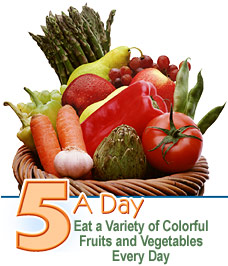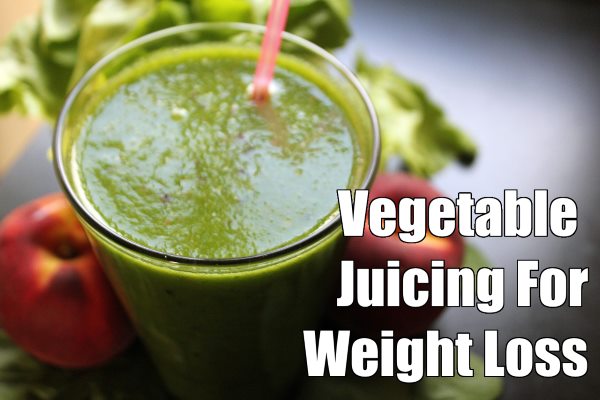We all see all of the colors of the vegetables when we go to the grocery store, but do you know what vitamins, minerals and other nutrients are in the vegetables that we eat base on the color of the vegetable?
CDC in the US has been promoting people to eat at least five servings of fruits and vegetables a day.
As you probably know there are many ways to make yourself healthier and eating fruits and vegetables in higher quantities will definitely make a difference of how you look and feel.
Eat plenty of different fruits and vegetables. Diets rich in fruits and vegetables may reduce the risk of cancer and other chronic diseases.
Fruits and vegetables provide essential vitamins and minerals, fiber, and other substances that are important for good health. Most fruits and vegetables are naturally low in fat and calories and are filling.
5 A Day for Better Health is a national program and partnership that seeks to increase the number of daily servings of fruits and vegetables Americans eat to five or more.
The 5 A Day program provides easy ways to add more fruits and vegetables into your daily eating patterns.
Fruit And Vegetable Resources
Fruit and Vegetable of the Month
Each month a fruit and vegetable are featured with nutritional information, tips on how to prepare them and great tasting recipes.
Color Your Way to 5 A Day
 TheThere are thousands of health promoting phytochemicals found in plants.
TheThere are thousands of health promoting phytochemicals found in plants.
Research is just beginning to understand how they work to improve health, so it’s important to eat a wide variety of colorful orange/yellow, red, green, white, and blue/purple vegetables and fruit every day.
By eating vegetables and fruit from each color group, you will benefit from the unique array of phytochemicals, as well as essential vitamins, minerals, and fiber that each color group has to offer alone and in combination.
Here is a list of all of the colors and the nutrients that those colors provide.
More Color More Health
Growing up you may have been told to eat your greens, but what about your reds, oranges, yellows and blues?
The Centers for Disease Control and Prevention and the 5 A Day Partnership encourages YOU to “Sample the Spectrum” of the colorful vegetables and fruit available this season.
By putting something of every color on your plate or in your lunch bag, you are more likely to eat the 5 to 9 recommended servings of vegetables and fruit every day. Just think:
- 1 cup of dark, leafy GREENS
- ½ cup of RED tomatoes
- ½ cup of YELLOW peppers
- 6 oz. ORANGE juice
- ½ cup of BLUEberries.
And you have 5 A Day! It’s quite simple when you Sample the Spectrum.
The more reds, oranges, greens, yellows, and blues you see on the plate, the more health promoting properties you are also getting from your vegetable and fruit choices.
Nutrition research shows that colorful vegetables and fruit contain essential vitamins, minerals, fiber, and phytochemicals that your body needs to promote health and help you feel great. Here are the specifics…
Reds Vegetables
 When you add deep reds or bright pinks to your daily diet, you are also adding a powerful antioxidant called lycopene.
When you add deep reds or bright pinks to your daily diet, you are also adding a powerful antioxidant called lycopene.
Lycopene is found in tomatoes, red and pink grapefruit, watermelon, papaya and guava.
Diets rich in lycopene are being studied for their ability to fight heart disease and some cancers.
Greens Vegetables
Do you know why this color is so essential to your diet? Not only do green vegetables look great and taste wonderful, but they are rich in the phytochemicals that keep you healthy.
For example, the carotenoids lutein and zeaxanthin that are found in spinach, collards, kale and broccoli have antioxidant properties and are being studied for their ability to protect your eyes by keeping your retina strong.
Also, research is being done on cruciferous vegetables like cabbage, Brussels sprouts, cauliflower, kale, and turnips to see if they may reduce the risk of cancerous tumors! Greens are also loaded with essential vitamins (folate), minerals, and fiber.
Orange and Yellow Vegetables
Orange, the color of a blazing sun, is a must have in your daily diet. Orange vegetables and fruits like sweet potatoes, mangos, carrots, and apricots, contain beta-carotene.
This carotenoid is a natural antioxidant that is being studied for its role in enhancing the immune system. In addition to being touted as a powerful health-protector, the orange group is rich in Vitamin C.
Folate, most often found in leafy greens, is also found in orange fruits and vegetables, and is a B vitamin that may help prevent some birth defects and reduce your risk of heart disease. With a chemical make-up this good, make the orange group always a part of your 5 to 9 a day.
Bright yellows have many of the same perks as the orange groups: high in essential vitamins and carotenoids.
Pineapple, for example, is rich with Vitamin C, manganese, and the natural enzyme, bromelain. Additionally, corn and pears are high in fiber.
Yellow fruits and vegetables belong to many different families, but they all share the common bond of being health enhancing with great taste. Go for the gold!
Blue and Purples Vegetables
Blues and purples not only add beautiful shades of tranquility and richness to your plate, they add health-enhancing flavonoids, phytochemicals, and antioxidants.
Anthocyanins, a phytochemical, are pigments responsible for the blue color in vegetables and fruits, and are being studied for their role in the body’s defense of harmful carcinogens.
Blue and purple produce have many different nutrients including, lutein, zeaxanthin, resveratrol, Vitamin C, fiber, flavonoids, ellagic acid, and quercetin. Many of these nutrients are also found in red fruits and vegetables as well.
Try these blue and purple vegetables: Eggplant, Cabbage, Endive, Asparagus, Carrots
Blueberries, in particular, are rich in Vitamin C and folic acid and high in fiber and potassium.
White Vegetables
Vegetables from the onion family, which include garlic, chives, scallions, leeks, and any variety of onion, contain the phytochemical allicin. Research is being conducted on
Allicin to learn how it may help lower cholesterol and blood pressure and increase the body’s ability to fight infections.
Indoles and sulfaforaphanes, phytochemicals in cruciferous vegetables like cauliflower, for how they may inhibit cancer growth.
Polyphenols, another important phytochemical in pears and green grapes for how they may reduce the risk of certain cancers.
Savor the Spectrum of Color All Year Long
There is color in every season. When it comes to your health, you’ll fare best with a multi-colored diet.
Lycopene is a powerful antioxidant, which means that, among nutrients, it has a greater-than-average ability to “quench” free radicals that cause damage to cells.
Excessive free radical damage has been implicated in the development of heart disease, Alzheimer’s disease and many cancers, as well as accelerated aging
Although phytonutrients aren’t essential for keeping you alive, unlike the vitamins and minerals that plant foods contain. But when you eat or drink phytonutrients, they may help prevent disease and keep your body working properly.
More than 25,000 phytonutrients are found in plant foods.
Flavonoids are important antioxidants, and promote several health effects. Aside from antioxidant activity, these molecules provide the following beneficial effects:
- Anti-viral
- Anti-cancer
- Anti-inflammatory
- Anti-allergic
One flavonoid called quercetin can help to alleviate eczema, sinusitis, asthma, and hay fever. Some studies have shown that flavonoid intake is inversely related to heart disease, with these molecules inhibiting the oxidation of low-density lipoproteins and therefore reducing the risk of atherosclerosis developing.
By putting something of every color on your plate or in your lunch bag, you are more likely to eat the recommended 5 to 9 servings of vegetables and fruits every day.
Think color: 1 cup of dark, leafy salad GREENS with WHITE onions sprinkled on top, ½ cup of RED tomatoes, ½ cup of YELLOW pineapple chunks, 6 oz. ORANGE juice and ½ cup of BLUEberries. Delicious and healthy!



